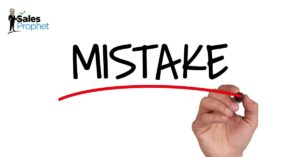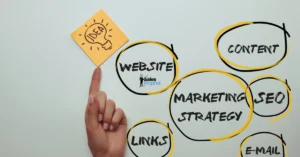Success in today’s rapidly evolving business landscape hinges on efficiency and productivity. Organizations consistently strive to optimize procedures and enhance their financial performance. One way to achieve this is through seamless integration.
In this article, we’ll explore the power of seamless integration and how it can unlock efficiency and productivity for your business.
What is Seamless Integration?
Seamless integration is the process of connecting different systems, automation tools, applications, or processes to work together seamlessly. Data can flow freely between systems without any manual intervention or disruption.
Why is Seamless Integration Important?
Seamless integration is vital for several reasons:
- Efficiency: By connecting systems and automating processes, seamless integration eliminates manual tasks and reduces the risk of human error. This leads to increased efficiency and productivity.
- Data Accuracy: With seamless integration, data can flow freely between systems without manual intervention. This reduces the risk of data entry errors and ensures that all systems have accurate and up-to-date information.
- Cost Savings: By automating processes and eliminating manual tasks, seamless integration can save businesses time and money. This allows companies to reallocate resources to other areas of the business.
- Improved Communication: Seamless integration allows for real-time data sharing between systems, improving communication and collaboration between teams. This leads to faster decision-making and improved overall performance.
How Can Seamless Integration Unlock Efficiency and Productivity?
Seamless integration can unlock efficiency and productivity in several ways:
Streamlined Processes
Seamless integration eliminates manual tasks and automates processes, allowing for a more streamlined workflow. This means that employees can focus on more critical tasks, increasing productivity.
For example, a company may use a CRM system to manage customer data and a marketing automation platform to send targeted emails. With seamless integration, customer data can flow seamlessly between the two systems, eliminating the need for manual data entry. This saves time and reduces the risk of data entry errors, allowing employees to focus on other tasks.
Sales Prophet integrates with all three systems, i.e., CRM, Marketing Automation, and Sales Automation platform capabilities, into one platform. Sales Prophet also integrates with third-party CRMs HubSpot, Pipedrive, and Salesforce.com for companies who already have a CRM and dont want to use the Sales Prophet CRM..
Real-Time Data Sharing
Seamless integration allows for real-time data sharing between systems. This means that all systems can access the most up-to-date information, leading to better decision-making and overall performance.
For example, a company may use a sales automation and inventory management system to track inventory levels and a sales system to manage customer orders. With seamless integration, the inventory management system can automatically update the sales system when inventory levels change. This ensures that sales reps have accurate information when placing orders, leading to improved customer satisfaction and increased sales.
Improved Collaboration
Seamless integration also improves collaboration between teams. By connecting systems and allowing real-time data sharing, teams can work together more efficiently and effectively.
For example, a company may use a project management automation tool to track tasks and a communication platform to collaborate with team members. With seamless integration, team members can access project information and communicate with each other in real-time, leading to improved project management and increased productivity.
How to Implement Seamless Integration
Implementing seamless integration can seem daunting, but it can be a smooth and successful process with the right approach. Here are some steps to follow when implementing seamless integration:
Identify Your Needs
The first step in implementing seamless integration is to identify your needs. What systems or processes do you want to connect? What data needs to flow between systems? What are your goals for implementing seamless integration?
By clearly defining your needs and goals, you can choose the correct integration solution and ensure a successful implementation.
Choose the Right Integration Solution
Many integration solutions are available, so choosing the one that best fits your needs is essential. Some factors to consider when choosing an integration solution include:
- Ease of Use: Look for an integration solution that is easy to use and requires minimal technical knowledge. This will make the implementation process smoother and reduce the risk of errors.
- Scalability: Choose an integration solution that can grow with your business. As your company evolves, you may need to connect more systems or processes, so choosing a solution that can handle this growth is essential.
- Compatibility: Ensure the integration solution is compatible with the systems you want to connect. Some solutions may only work with specific systems, so it’s important to do your research before deciding.
Test and Monitor
Before fully implementing seamless integration, testing and monitoring the integration is essential to ensure everything is working correctly. This will help identify any issues or errors that must be addressed before the integration goes live.
Once the integration is live, it’s essential to continue monitoring it to ensure everything is running smoothly. If any issues arise, they can be addressed quickly to minimize disruption to your business.
Real-World Examples of Seamless Integration
Many companies have successfully implemented seamless integration to unlock efficiency and productivity. Here are a few real-world examples:
Uber and Google Maps
Uber uses Google Maps to provide real-time location data to its drivers. This allows drivers to navigate to their destination efficiently, leading to faster pick-up and drop-off times and improved customer satisfaction.
Spotify and Facebook
Spotify allows users to connect their Facebook account to their Spotify account. This allows users to share their favorite songs and playlists with their Facebook friends, increasing engagement and customer retention.
Sales Prophet
Sales Prophet integrates with a database of over 80 million B2B contact records and the real-time email verification platform EmailOversight. This allows salespeople and marketers to pull lists of ideal contacts and verify the records without downloading or uploading files. This speeds up the process salespeople use to send automated emails to their ideal prospects.
This integration also helps marketers send mass emails for content syndication or drop prospects showing buying behavior into lead nurturing campaigns. Campaign reports for both sales and marketing departments appear in the same company dashboard. Sales Prophet also has a built-in CRM with task management. For companies with a CRM, Sales Prophet integrates with CRM providers HubSpot, Pipedrive, and Salesforce.com.
Conclusion
Efficiency and productivity are crucial factors for the success of any business in today’s fast-paced world. Companies are turning to seamless integration and automation tools to achieve these goals. By seamlessly connecting different systems and processes, companies can eliminate manual tasks, reduce errors, and save time and money. In this article, we explored the power of seamless integration and how it can unlock efficiency and productivity. Let’s delve deeper into automation tools, seamless integration, sales automation, and marketing automation to uncover their potential for your business’s success.




